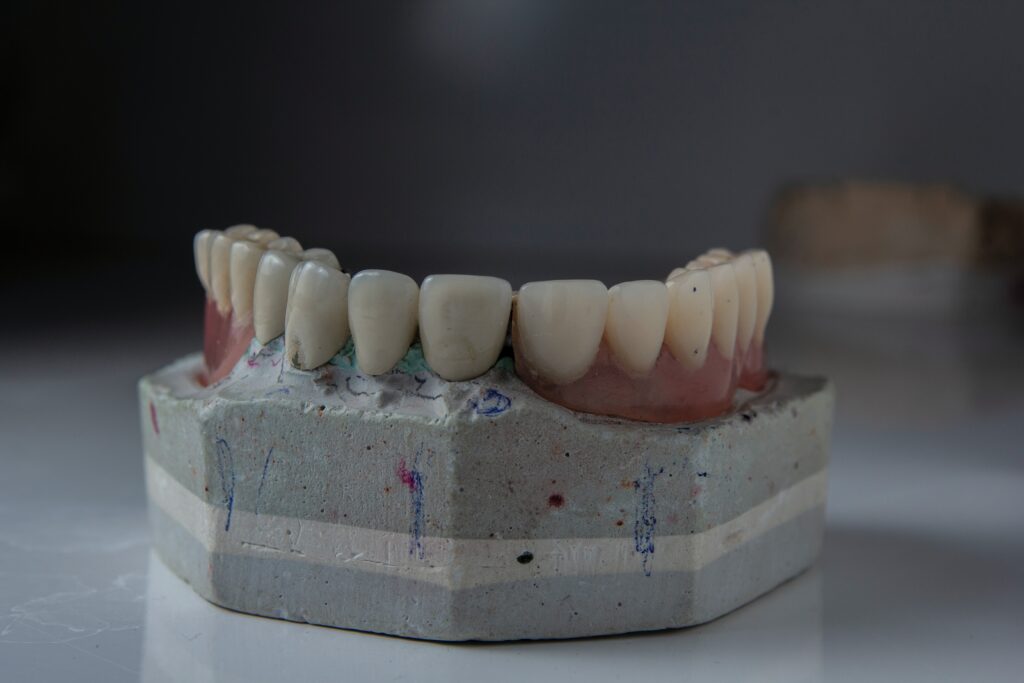
If you’ve been told that you need a root canal, you may have questions about the procedure and what it entails. Let’s explore what a root canal is and when it is needed.
A root canal is a dental procedure that is performed to save a tooth that has been severely damaged or infected. It involves removing the infected or inflamed tissue from the inside of the tooth, known as the pulp, and cleaning and sealing the tooth to prevent further infection or decay.
During the root canal procedure, your dentist or endodontist will carefully remove the pulp, which contains nerves and blood vessels, from the tooth’s root canals. The canals will then be cleaned and shaped before being filled with a biocompatible material called gutta-percha. Finally, the tooth will be restored with a dental crown or filling to provide strength and protection.
A root canal may be recommended by your dentist if you are experiencing one or more of the following symptoms:
These symptoms may indicate that the pulp inside your tooth has become infected or inflamed. This can occur as a result of deep decay, repeated dental procedures on the same tooth, a cracked or broken tooth, or trauma to the tooth.
It’s important to address these symptoms promptly, as delaying or avoiding a root canal can lead to further complications and potential tooth loss. If you are experiencing any of these symptoms, it is recommended to consult with a dental professional who can evaluate your condition and determine if a root canal is necessary.
For more information about root canals and the treatment process, visit our article on root canal treatment.
Understanding what a root canal is and when it is needed can help alleviate any apprehension you may have about the procedure. If you suspect that you may require a root canal, it is essential to seek professional dental care to address the issue promptly and preserve the health of your teeth.

Photo by Ozkan Guner on Unsplash
If you’re facing the prospect of a root canal, it’s natural to have questions about the procedure and what to expect. Understanding the root canal process can help alleviate any concerns you may have. The process typically involves four key steps: examination and diagnosis, preparing for the procedure, the root canal procedure itself, and restoration and follow-up.
Before proceeding with a root canal, your dentist will perform a thorough examination of your tooth and surrounding tissues. This may involve taking X-rays to assess the extent of the damage and determine if a root canal is necessary. The examination helps your dentist identify the cause of the problem and determine the appropriate treatment plan. For more information on root canals, visit our article on root canal treatment.
Once the need for a root canal is confirmed, your dentist will discuss the procedure with you and provide any necessary instructions. This may include avoiding food and drink for a certain period before the procedure, especially if general anesthesia will be used. You may also be advised to take any prescribed antibiotics to address any existing infection. It’s important to follow these instructions carefully to ensure a successful and comfortable root canal experience.
During the root canal procedure, your dentist will numb the area around the affected tooth using a local anesthetic. This ensures that you remain comfortable throughout the process. Once the area is numb, your dentist will create a small access hole in the tooth to reach the infected or damaged pulp. The infected pulp is then carefully removed, and the root canals are cleaned and shaped using specialized dental instruments. This process eliminates any infection and prevents further damage. For a detailed understanding of the root canal procedure, you can refer to our article on root canal procedure.
After the root canal procedure is complete, your dentist will discuss the next steps for restoring the tooth. In most cases, a dental crown is placed over the treated tooth to provide strength and protection. The crown is custom-made to match the shape and color of your natural teeth, ensuring a seamless appearance. Your dentist will also provide instructions on post-treatment care, such as avoiding certain foods or beverages and maintaining good oral hygiene practices. Follow-up appointments will be scheduled to monitor the healing process and ensure the success of the root canal treatment.
By understanding the root canal process and what each step entails, you can approach the treatment with confidence. Remember to consult with your dentist for personalized guidance and to address any specific concerns you may have. With proper care and regular check-ups, your treated tooth can continue to function effectively for years to come.
When it comes to the duration of a root canal procedure, there are several factors that can influence how long the treatment will take. These factors include the complexity of the case, the number of canals involved, and the presence of infection or abscess.
The complexity of the case refers to the condition of the tooth and the extent of the damage. Some root canals may be straightforward, while others can be more challenging. For example, a tooth with multiple curved canals or severe decay may require more time and expertise to complete the procedure. The dentist will evaluate the complexity of your case during the initial examination and diagnosis phase. For more information on the root canal process, refer to our article on root canal treatment.
Each tooth can have a different number of root canals. Front teeth typically have one or two canals, whereas molars can have three or more. The more canals that need treatment, the longer the procedure may take. This is because each canal must be thoroughly cleaned, shaped, and filled to ensure the success of the treatment. The dentist will determine the number of canals in the affected tooth during the examination phase. To learn more about the root canal procedure, visit our article on root canal procedure.
If there is an infection or abscess present in the tooth, it may require additional steps to address the problem effectively. The dentist may need to perform additional cleaning procedures, such as irrigation or the use of antimicrobial solutions, to eliminate the infection. This can prolong the duration of the root canal treatment. It’s important to address any infection or abscess promptly to prevent further complications. For more information on root canal aftercare and recovery, refer to our article on root canal before and after.
Understanding these factors can give you a better idea of the potential duration of your root canal treatment. However, it’s important to note that every case is unique, and the exact duration can vary from person to person. Your dentist will provide you with a more accurate estimate based on your specific situation. Remember to follow the dentist’s instructions for aftercare and attend any necessary follow-up appointments to ensure the success of your root canal treatment.
The duration of a root canal procedure can vary depending on several factors, including the complexity of the case and the number of canals involved. In general, root canals can be completed in either a single visit or multiple visits to the dentist.
In some cases, a root canal treatment can be completed in a single visit to the dentist. This is typically possible when the case is straightforward, and there are no complications or additional procedures required. During a single-visit root canal, the dentist will perform the entire procedure, including the cleaning and shaping of the root canals, and the filling and sealing of the tooth. This approach is convenient for patients who prefer to have the treatment completed in one appointment.
In more complex cases, a root canal treatment may require multiple visits to the dentist. This is often the case when there are multiple canals to be treated, or when there is an infection or abscess present. During the initial visit, the dentist will perform an examination, diagnose the issue, and prepare the tooth for the procedure. This may involve cleaning the infected area and placing medication to control the infection.
In subsequent visits, the dentist will continue with the root canal procedure by cleaning and shaping the canals, and ultimately filling and sealing the tooth. The number of visits required will depend on the specific circumstances of the case, and the dentist will provide a treatment plan and timeline accordingly.
It’s important to note that the timeframe for a root canal can also be influenced by other factors, such as the availability of appointments and the coordination required for any additional procedures, such as the placement of a dental crown. Your dentist will discuss the details of your treatment plan and provide an estimate of the timeframe required to complete the root canal.
Remember, a root canal is a crucial dental procedure that aims to save and restore a damaged tooth. It’s important to follow your dentist’s instructions and attend all follow-up appointments to ensure the success of the treatment. If you have any concerns or questions about the duration of your root canal or the process itself, don’t hesitate to reach out to your dentist for clarification.
Once you have undergone a root canal procedure, proper aftercare and recovery are essential for the long-term health of your treated tooth. This section will guide you through the steps to manage discomfort, the importance of follow-up appointments, and the long-term care needed for the treated tooth.
After a root canal, it is common to experience some discomfort or sensitivity in the treated tooth and surrounding area. You may also notice mild swelling or tenderness. To manage these symptoms, your dentist may recommend over-the-counter pain relievers, such as ibuprofen. Applying a cold compress to the outside of your cheek near the treated area can also help reduce swelling and alleviate discomfort. If the pain persists or becomes severe, it is important to reach out to your dentist for further evaluation.
Following a root canal, it is crucial to attend all follow-up appointments scheduled by your dentist. These appointments allow your dentist to monitor your progress, ensure the tooth is healing properly, and address any concerns or complications that may arise. During these visits, your dentist may take X-rays to assess the healing of the tooth and evaluate the success of the root canal treatment. It is vital to follow your dentist’s instructions and keep these appointments to ensure the best possible outcome for your treated tooth.
To maintain the health and integrity of the treated tooth in the long run, it is important to practice good oral hygiene. This includes brushing your teeth twice a day with a soft-bristled toothbrush, flossing daily, and using an antimicrobial mouthwash. Regular dental check-ups and cleanings are also essential to monitor the health of the treated tooth and ensure there are no signs of reinfection.
In some cases, the dentist may recommend a dental crown to provide additional protection and support to the treated tooth. A crown can help strengthen the tooth and prevent fractures or further damage. Your dentist will discuss this option with you if it is necessary for your specific case.
Remember, each individual’s recovery process may vary, and it is important to follow all post-treatment instructions provided by your dentist. If you have any concerns or questions during your recovery, do not hesitate to reach out to your dentist for guidance and support.
By following proper aftercare and attending regular follow-up appointments, you can help ensure the success of your root canal treatment and enjoy a healthy, pain-free smile for years to come. For more information on root canals and other dental treatments, visit our article on root canal treatment.